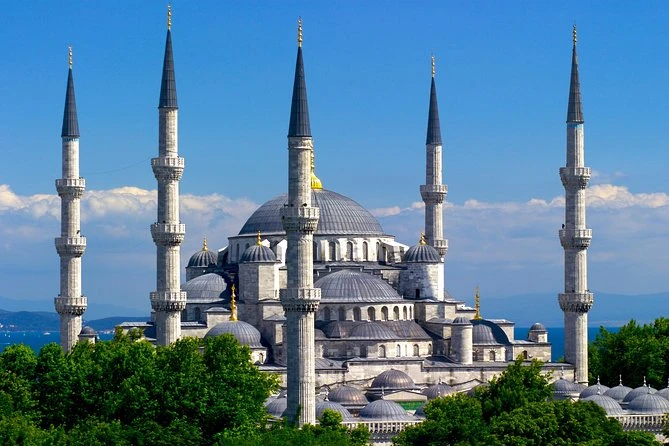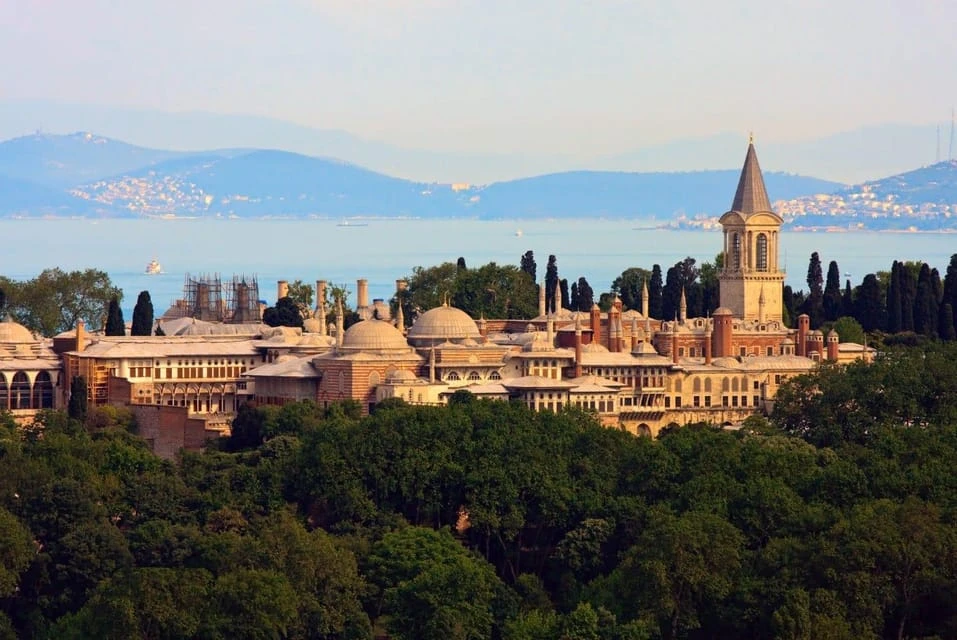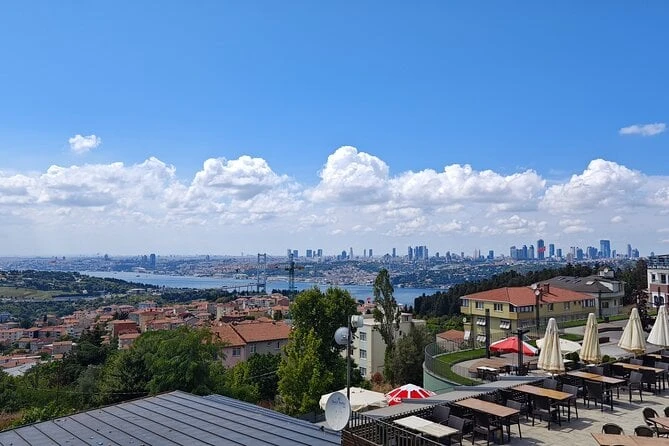The largest and stateliest city in Turkey, Istanbul is everything the word would imply—it towers above the rest, a pulsating metropolitan city straddling two continents, Europe and Asia. Istanbul is a mother lode of allurements from extending historical ones, spectacular architecture, and wonderful cultures. It covers famous places like Hagia Sophia, Topkapi Palace, the Blue Mosque, and, of course, the very lively Grand Bazaar. Feel the pulsating vibe of the markets and give in to delicious food while you take in charming neighborhoods, discovering your rich heritage here in this modern cosmopolitan. Be it roaming around historical sites or dancing through vibrant nights, Istanbul is an adventure to remember. It must be visited in Turkey Packages.
What do you know about Istanbul? Where is it?
Istanbul is the biggest city in Turkey—one of the most famous places in the world. It is not only known for its histories but thrives on diverse cultures owing to the unique location shared by the two continents—Europe and Asia. The city lies northwest of Turkey and stands along the shores of the Bosporus Strait, separating the European and Asian sides, making up the city. Of course, Istanbul is not the capital city of Turkey (that is, Ankara); however, it is regarded as the country's internal capital due to its being the most important cultural and economic center with a population of over 15 million. For centuries, this historic city has served as a crossroads in trade, culture, and history, at first as the capital city of the Byzantine Empire (as Constantinople) and later as the Ottoman Empire.
The historical significance of Istanbul in world history
1. Byzantium in the ancient times
The Greeks found Byzantium as a city 660 years before the Common Era. The location would serve a very healthy trade route for the passage between the Mediterranean and Black Seas. Location importance flourished with that of the world's development, such as that between Europe and Asia.
2. Constantinople-the Capital of Byzantine Empire
In 330 AD, the Roman Emperor Constantine the Great refounded the city as Constantinople, thereby declaring it the capital of the Byzantine Empire. Under the Byzantine Empire, Constantinople went to be a major center of Christianity, culture, and learning. The largest cathedral in the world and a proud monument of Byzantine architecture and Christian glory was the Hagia Sophia, which was completed in 537 CE.
3. The Core City of the Ottoman Empire
The Ottoman Empire conquered Constantinople in 1453, smashing the Byzantine Empire to the ground with Sultan Mehmed II at its lead. The Ottoman state turned the ancient city into its capital after a stagnating 400 years that the empire spanned three main geographical continents: Europe, Asia, and Northern Africa. Numerous architectural wonders, such as the Blue Mosque, Topkapi Palace, and the Grand Bazaar, sufficed to crown the city as the arbiter of importance in the Islamic world.
4. Religious and Cultural Importance
The unique position that Istanbul holds as the center of both Christianity and Islam has made it a religious-cultural melting pot. For several centuries, it served as the seat of the Eastern Orthodox Church and became a significant place in the Islamic world with the Ottoman conquest. Originally, the Hagia Sophia was a Catholic church converted to a mosque and now a museum representing both religions' influences in the city.
5. The Bridge Between East and West
Over the years, Istanbul has stood as the multiracial crossroads of civilisations and cultures affecting art and architecture, literature, and philosophy. Indeed, its history as a melting pot of Greek, Roman, Byzantine, and Ottoman influences has lent richness and diversity to the cultural heritage of the city.
6. Modern-day Importance
It is now a major global city, with Istanbul retaining the old traditions and culture and all the life within its background. Its cultural and economic power stretches its arm all across Turkey as well as beyond borders in tourism, trade, art, and education.
Some of the famous landmarks and cultural sites in Istanbul:
1. Hagia Sophia
Originally inaugurated as a cathedral by Emperor Justinian I in 537 CE, the Hagia Sophia was converted into a mosque in 1453 by the Ottomans and then became a museum. Known for being one of the masterpieces of Byzantine architecture, it features a great dome, skillfully carved mosaics, and a harmonious union of elements from both Christian and Islamic design. Truly, one of the most visited and celebrated in the city's intricate topology.
2. Topkapi Palace
The Topkapi Palace was an important residence for Ottoman sultans almost for 400 years. This is a large complex of courtyards, gardens, and luxurious rooms set up beautifully beside the Bosporus, which kept great wealth—the Sapphire of the Sultans and the Topkapi Dagger. The many parts of the palace include Harem, Imperial Treasury, and Sacred Relics of Islam.
3. Blue Mosque (Sultan Ahmed Mosque)
The Blue Mosque is one of the most recognizable monuments of Istanbul, being recognized by its striking blue tiles and impressive architecture. Erected between 1609 and 1616 during the reign of Sultan Ahmed I, it features a large central dome, smaller surrounding domes, and six minarets, making it a touchstone example of Ottoman mosque architecture. It remains an active mosque today.
4. Basilica Cistern
Cistern originally built underground in the 6th century, during the Byzantine period, served as an underground water reservoir that supplied water to the Great Palace of Constantinople. In the present, it attracts visitors to walk among its hundreds of ancient columns, where also found the famous Medusa heads given as column bases. A hauntingly beautiful and atmospheric site to explore.
5. Grand Bazaar (Kapalı Çarşı)
The Grand Bazaar is possibly one of the largest and oldest covered markets in the world. Covering over 4,000 various shops, this market hosts virtually everything—from carpets, jewelry, spices, to textiles. A visit to the mill offers a taste of what life is like commercially and culturally in the true Istanbul, where one can haggle for goods in an authentic, bustling environment.
6. Galata Tower
The Galata Tower is an iconic medieval stone tower that provides a panoramic view of the city, the Golden Horn, and the Bosporus Strait. Built in the 14th century by the Genoese, it was a watchtower and later served as a lighthouse. Today, it offers visitors one of the most beautiful panoramic aerial views of the Istanbul skyline.
7. Süleymaniye Mosque
Considered the largest and most important religious building in the city of Istanbul, the Süleymaniye Mosque was constructed by the famous Ottoman architect Mimar Sinan. Completed in 1557, it is an architectural wonder as well as a token of the grandeur of the Ottoman Empire. The mosque complex also features a library, a few schools, a hospital, and a very large courtyard.
8. Harem of Topkapi Palace
The Harem of the Topkapi Palace is a secret jewel in the treasure trove of intimacy and luxury in the closed-off private quarters of the sultans, their families, and their concubines. It portrayed part of the intriguing life behind palace walls in exquisitely decorated rooms and courtyards.
9. Dolmabahçe Palace
The Dolmabahce Palace was the administrative hub of the Ottoman Empire in its later years and was built in the 19th century. It is a display of the opulence of the day: chandeliered, expansive halls, and the Crystal Staircase. The Bosporus raves at its doors, standing there like a wonder of later Ottoman grandeur.
10. Chora Church
(The Kariye Museum) Byzantine church where one finds mosaics and frescoes; this church is known for its biblical depictions in graphic detail. After the Ottomans occupied Constantinople, it was converted to a mosque, and today, it is a museum. The artistry makes it among the closest to the Byzantine religious art preserving the nature of the countries.
11. Taksim Square and Istiklal Street
Taksim Square is one of the important hubs in Istanbul for its open public space and its proximity, near to Istiklal Street, which is thronged by numerous people walking to and fro and lined with shops, cafes, and restaurants. This place acts as a cultural center for modern Istanbul, where concerts, festivals, and parades commonly occur.
12. Spice Bazaar (Mısır Çarşısı)
Another historic bazaar in Istanbul is a marketplace in brilliant colors and scents, which has been loaded with stalls selling spices, herbs, sweets, and dried fruits and souvenirs. The bazaar dates back to the 17th century and is a sensory overload with its view and smell.
13. Bosphorus Cruise
A Bosphorus cruise is the ultimate experience that one could have while viewing the beautiful landscape as well as skyline of Istanbul. While riding on a bosporus tour, one would find places like the Topkapi Palace, the Dolmabahçe Palace, and the Galata Tower, all famous landmarks found within the city that would be viewed as the traveller would enjoy the mixture of two worlds seen in one city.
A Turkey Day tour to Istanbul is great for having the glory of a country, where you can visit lots of live cultural heritage with architectural beauty and vibrant hustle and bustle. Indeed, from historical heritage sites such as those of Hagia Sophia and the Blue Mosque to serenity like Çamlıca Hill, Istanbul offers the ideal combination of history, beauty, and all modern charm. Whether you are getting lost in the crowded bazaars, admiring the view at the Çamlıca TV Tower, or soaking in the diverse culture of this city, a Turkey day visit will always be quite grassroots. This active city invites tourists to enjoy this timeless taste and take home memories that will last a lifetime.










-webp.webp)
-webp.webp)

-webp.webp)



